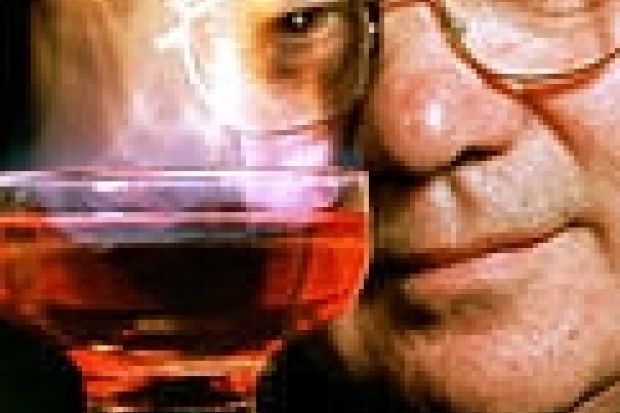Is bread made in a bull's condom a better loaf? Len Fisher samples some of the exotic results of scientists entering the kitchen.
The Sicilian village of Erice, rumoured former home of the criminal Mafia, recently played host to the new gastronomic mafia. Participants included leading chefs, food writers and scientists keen to apply their understanding to the creation of new dishes and the improvement of traditional ones. Heston Blumenthal, ground-breaking British chef of the year, led the way with his bacon-and-egg ice cream, tobacco-flavoured dark chocolate and a beetroot jelly with added tartaric acid.
The success of such apparently bizarre combinations is based on scientific research that shows the combined effects of several sensations can produce a taste effect quite different from the sum of the individual parts.
Take the beetroot jelly. Adding tartaric acid makes it astringent, which, combined with its visual appearance, gives the sensation of blackcurrant. One taster, told that it was beetroot, opined that the taste was disgusting. Told it was really blackcurrant, however, and she decided that it was, on second thoughts, delicious.
What we see and what we expect influences the taste that we experience. In fact, information from all of our senses comes into play. Our experience of texture can depend on whether our fingers are touching velvet or sandpaper while we are eating. We learnt in Erice that the softness of restaurant napkins, the choice of dining companion and even whether we have seen the dessert menu can all affect our perception of the taste and texture of food.
Ultimately we taste not with our mouths and noses, but with our brains. But brain science is not the only science that chefs are now using. There is plenty to be gained from simple physical science, as Shirley Corriher, spiky-haired doyenne of United States cookery writers, demonstrated when she produced a tender shortcrust pastry and a hard flaky pastry made from exactly the same ingredients. The difference was that the butter in the shortcrust pastry had been rubbed in, coating the individual flour particles and thus keeping water out and blocking the chemical reaction that leads to the formation of the elastic protein gluten.
Fritz Blank, chef-shaped chef de cuisine and owner of the famous Philadelphia restaurant Deux Cheminees, showed that even the simplest dish can be improved with a little science when he revealed his practice of rolling boiled eggs in crushed ice before serving - it means the outside of the white does not overcook from residual stored heat and become rubbery before the yolk has a chance to reach its optimum eating temperature.
Many dishes that are normally steamed or boiled in water are better if cooked for longer at a lower temperature. The problem is that traditional chefs' tools, such as the bain marie , do not have this form of control. The answer, as Peter Barham, author of The Science of Cooking , pointed out, is for chefs to buy the proper equipment (often cheaper) from scientific suppliers and to stop messing around with old-fashioned and sometimes inappropriate appliances.
Barham and I, stimulated by a question from Jeffrey Steingarten, the cigar-wielding food editor of Vogue , came up with a new cooking tool - a bull's condom. Our plan is to make bread dough in one, in the hope that the external pressure from the stretched rubber will influence bubble formation and hence texture. We are also looking to disprove the old wives' tale that air trapped during kneading is important in the rising process.
Cooking and preparation methods are not the only physical processes that can affect taste and texture. One of the meeting's highlights was a stomach-turning X-ray video showing a shadowy skull, complete with spectacles, rhythmically chewing and eventually swallowing a bolus of food.
One deduction from such studies is that the way that we eat affects our perception of food. We tend also to orientate asymmetric pieces of food with the long edge parallel to the line of our teeth. If the flavours at the two ends of the piece differ, they will not mix. Clearly, the way we cut and present food can affect the taste outcome.
All in all, there is a scientific revolution coming in cooking. The world may not be ready yet for bacon-and-egg ice cream, or for the full-strength vodka jelly that I prepared at Erice, let alone the inflammable version on which I am now working (a sort of gastronomic napalm). The typically pertinent question put by Leslie Forbes, food writer and bestselling novelist, still remains, however: is this revolution for chefs or for ordinary consumers?
My personal view is that it is for both. The question is how and how soon it will happen. Top chefs have the creative ability and the interest to lead the way in experimentation, but domestic cooking has much to gain from the results. Some of the techniques we heard about in Erice could be used to improve the palatability of nutritious, cheap, but sometimes unappealing foodstuffs.
The link is through writers and broadcasters who can and should bring these techniques to a wider public. Nicholas Kurti, the Oxford physicist who initiated the Erice meetings, and who became one of the first television cooks himself, would surely agree.
Len Fisher is a popular science writer and broadcaster and honorary research fellow in the physics department at Bristol University. He won an IgNobel prize in 1999 for his work on biscuit dunking.
Register to continue
Why register?
- Registration is free and only takes a moment
- Once registered, you can read 3 articles a month
- Sign up for our newsletter
Subscribe
Or subscribe for unlimited access to:
- Unlimited access to news, views, insights & reviews
- Digital editions
- Digital access to THE’s university and college rankings analysis
Already registered or a current subscriber?
